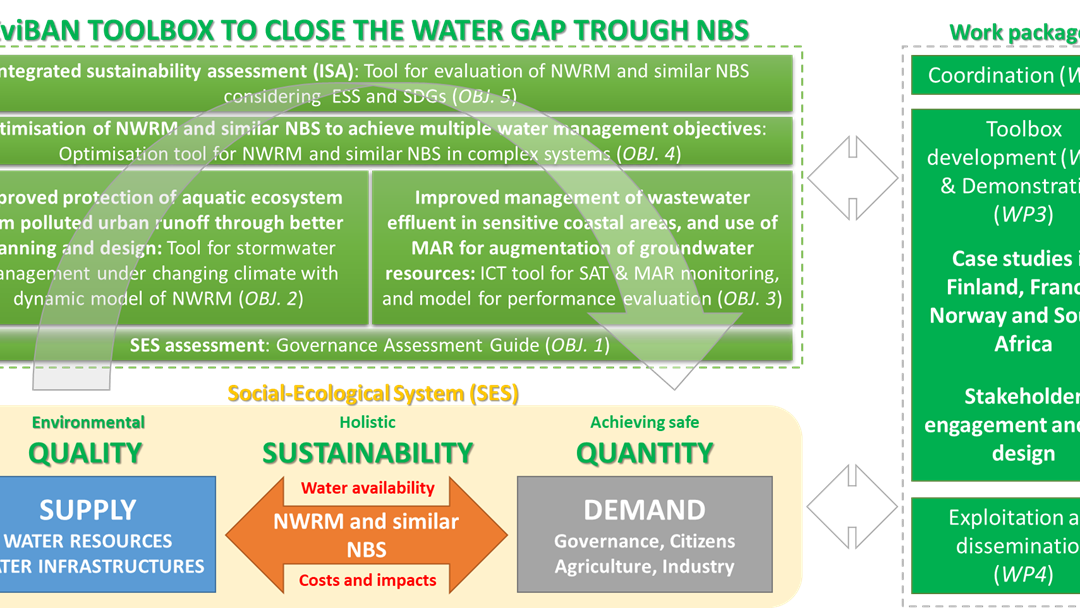Objective and structure
Objective and structure of the research
The main objective of EviBAN is to increase the knowledge on how NBS can be used for management of water resources to counter negative impacts of climate change, anthropogenic activities and societal change, and how NBS should be optimally used under different conditions to contribute to progress towards SDGs. Through integrating results from diverse case studies in South Africa, France, Finland and Norway, EviBAN will develop a toolbox for adaptive water management suited for different conditions with respect to climate change, anthropogenic activities and societal change in Europe and beyond.
To achieve these objectives, EviBAN will apply a case study (CS) approach. The case studies' main focuses are on infiltration of runoff and treated wastewater with MAR or on urban stormwater management by NWRM. The CS are distinct but have links through common external pressures (e.g. climate change, constraints by natural water cycle, water demand), shared tools (e.g., models such as SWMM, MARTHE, PHREEQC), and shared NBS, such as enhanced infiltration techniques required in MAR and pursued by NWRM.

Assessing the scope for implementation of NBS requires systematic knowledge of the governance context and perceived social and ecological functioning of the system in question. Identification of optimal solutions requires the ability to consider multiple water sources and technical measures, whether the case is on infiltration or stormwater. While the response to be optimised and input will be unique in each case, the optimisation procedure will be common. To ensure progress towards SDGs, the use of NBS needs to be assessed in an ISA where results concerning technical system performance, environmental impacts, governance, and socio-economic aspects across the case studies are combined in a holistic assessment. In EviBAN, stakeholders will be involved in co-design of the water management tools and solutions for the 4 demo-sites. The results will be operationalised in a toolbox with the shared models, the optimisation tool and the framework for ISA, and be available on the project website after the project.

Work packages
WP1 will provide the arenas for coordination of activities between the partners, organise project-wide meetings and workshops, facilitate project-wide involvement of stakeholders, and perform formal monitoring and reporting from the project to the FPOs.
WP2 will develop the toolbox for evaluating NWRM and similar NBS using a SES approach and is organised with tasks for each of the tools in the toolbox outlined in the figure above.
WP3 will demonstrate the applications of the WP2 toolbox methods in the case studies. WP3 will collect the supporting data from the study sites and prepare site maps, environmental datasets, and climate change summaries for dissemination in WP4. The joint goal is to integrate the case study results through applications of optimisation in the selected most suited case studies, and through the ISA exercises in all case studies.
WP4 will promote the innovation developed during EviBAN by companies in collaboration with scientific institutions, stakeholders and policy makers for the development of the adaptive water management toolbox as well as inform about project life and make results available.